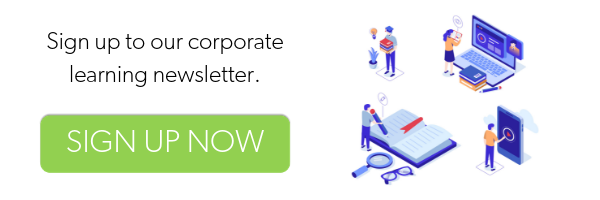Learning Trend 4: Big Data and Learning Analytics
Uncovering useful knowledge from the data we collect has been happening for some time now, at least since the 90s but when the term ‘Big Data’ entered the Oxford Dictionary in 2013, the ‘big’ that set this data apart referred to a volume, speed and complexity of data so large and so rapidly generated that it could not be managed or analysed using traditional business intelligence tools.
From 2005 onwards, the sheer volume and variety of online touch points whether tweets, YouTube videos, Instagram stories, web based financial transactions; all forming potential data points in the modern digital world has resulted in this exponential growth and importance of Big Data.
While earlier this decade, mere terabytes of data were gathered, now exabytes of data are collected in a couple of days and the resulting era of data information has provoked a whole new discipline of data science alongside the role that manages it, the data scientist, which according to HBR is the ‘sexiest job of the 21st century’.[1]
Data scientists collect and analyse big data using data analytics to discover relevant patterns or inferred intelligence around customer choices and preferences, market trends and more, and use these insights to improve product or service offerings and drive more competitive and successful business outcomes.
A large part of data and analytics pivots around machine learning, a specialized subfield of AI. If AI is the broad science of imitating human abilities and intelligence, machine learning is about training a machine to learn with minimal human intervention. The system learns by taking data, reviewing data sets, identifying patterns and making decisions. Machine learning uses a number of approaches to improve performance and intelligence, and so produce more accurate predictions and data driven decisions for businesses.
A QUANTIFICATION BIAS
While Machine Learning and data analytics continue to grow in popularity and many organizations use this AI in their talent development and HR departments, it’s worth pointing out that a number of writers have warned against a data driven approach overshadowing a knowledge driven approach. Many writers highlight the importance of having a human narrative accompany data analysis. This approach of recognizing the qualitative, human narrative behind data has been dubbed ‘thick data’ or ‘insight IQ’.
By using primary and secondary research approaches including surveys, questionnaires, focus groups, and interviews and by asking questions like ‘why is this happening?’ rather than fixating on data alone, more meaningful and important information will emerge. The integration of big data with thick data creates a bigger, better picture to drive improved learning and talent choices.
Data science and analytics are fast-moving fields and according to a Gartner report[2] the next generation of analytics is Augmented Analytics where analytics automated by machine learning and AI accelerate every facet of the discipline from collection and analysis to generating information, outcomes and intelligence. By using new AI based tools, businesses will benefit from instant, real time insights and be capable of leveraging analytics to figure out what they need to do to remain competitive.
LEARNING ANALYTICS – A TRENDING TOPIC
The science of learning seeks to describe, explain and predict how well learning happens as well as what hinders it. A key trend in the analytics space is the research field of learning analytics [LA]. Learning analytics emerged as a phrase around 2010 coming to us from experts and thinkers in the higher education arena. By looking at how students behave and perform as well as their experience and outcomes across different learning systems, interventions and social interactions within a university environment, new and exciting data emerges to contribute to the development of more effective and personalized learning interventions.
“Learning Analytics is a new tool for Talent and Learning Development to become familiar with.”
Analytics are everywhere, but how to get the most from them may involve more than just facts and stats. Data driven decisions are important for L&D. Learning ROI measures performance outcomes and so can place a value on specific learning interventions. Learning analytics changes gear to move away from more traditional metrics of learning like pass/fail, started/in progress, test and score results and seeks more meaningful data and insights to give organizations better and richer insights into pedagogy, patterns of interaction between learners, faculty and systems, and thus inform and develop more focused, personalized learning solutions.
Learning Analytics is a new tool for Talent and Learning Development to become familiar with. And while the popular job of data scientist remains, such expertise coupled with learning analytics may be one to watch and consider. Keep an eye too on the higher education space, as they continue to work in and develop this niche.
WHAT TO DO NEXT?
- AI and data and learning analytics are growing in sophistication and will become a game changer for Talent development; get on board.
- Consider moving beyond the old metrics to a more nuanced focus e.g. evaluation of course impact on performance, quality of course etc.
- Use data to better understand
-
-
-
-
-
-
-
-
- how well learning might be happening,
- what might be preventing it and
- how to improve it.
-
-
-
-
-
-
-
-
- Add thick data and human narrative to your mix of data analysis.
- Watch higher education space for developments and start to consider learning analytics as an area to track.
[1] https://hbr.org/2012/10/data-scientist-the-sexiest-job-of-the-21st-century






